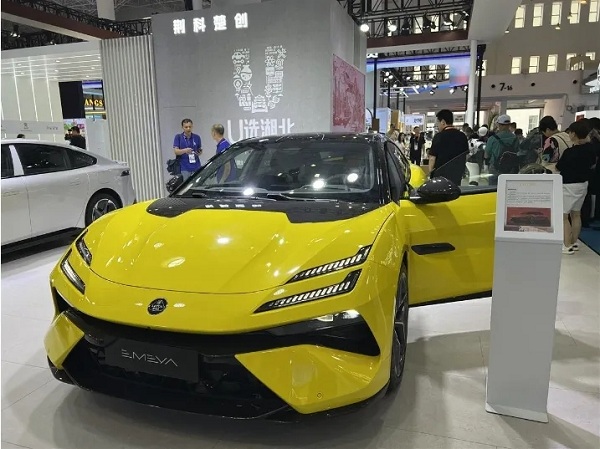

High-end vehicles produced in the Wuhan Economic & Technological Development Zone (WEDZ) are displayed at the China International Consumer Products Expo 2024 (CICPE 2024) on April 13. [Photo provided to en.whkfq.gov.cn]
The China International Consumer Products Expo 2024 (CICPE 2024) kicked off on April 13 in Haikou city of Hainan province.
In its No 7 pavilion, nearly 60 enterprises based in Central China's Hubei province showcased more than 400 product categories, demonstrating the region's characteristics through clothing, food, entertainment, and health maintenance products.
Dongfeng Mengshi, VOYAH, Dongfeng and Lotus – four carmakers based in the Wuhan Economic & Technological Development Zone (WEDZ) exhibited their four high-end production models, luring many visitors.
The M-Hero 917 was one of the four exhibited models. It was launched on April 28 last year, and it has been sold in Russia, the Middle East and Norway. According to Wang Zixuan, Dongfeng Mengshi's senior user operation manager, the company showed the M-Hero 917 concept car last year at the expo, and now this luxury pure-electric off-road vehicle has entered the mass production stage.

Lotus's first all-electric supercar, EMEYA. [Photo provided to en.whkfq.gov.cn]
Lotus's first all-electric supercar, EMEYA, also gained traction in the market. This production model is considered the world's fastest mass-produced four-wheel sports car, and its name is derived from the Arabic language, and conveys the meaning "blooming like a dream". It symbolizes freedom, inspiration, energy, and dreams.
Lotus is a world-class sports car brand. In July 2022, its global smart workshop in the WEDZ began operation. Now, all EMEYA vehicles are produced in the zone, and then are sold all around the world.
Since its first delivery on March 15, about 2,000 EMEYA vehicles have been sold, of which 60 percent were sold to Chinese buyers. It also turned out to be popular in cities such as London, Seoul, Bangkok and Tokyo.